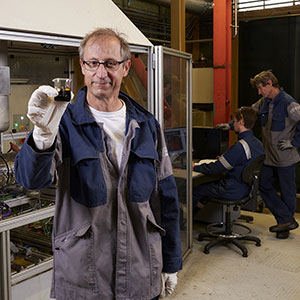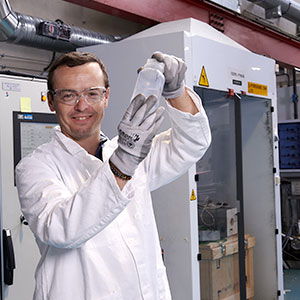The Carbon Conversion Platform
Converting CO2 and its derivatives into carbon-based fuels
 The success of the circular carbon economy will depend on the full range of technologies for converting CO2 and its derivatives into useful synthetic products using processes powered by low-carbon energy sources. CEA-Liten has put the circular carbon economy at the center of its research, most notably through the Carbon Conversion Platform. The platform has biomass conversion equipment for wood and agricultural and forest residues. It has other equipment that can be used to evaluate the potential of sources like household and industrial waste, solid recovered fuel, sludge from wastewater treatment plants, micro-algae, and food industry waste. The platform's test benches can be used to assess the performance of catalytic reactors for the conversion of gas mixtures including CO2 and/or CO by hydrogenation.
The success of the circular carbon economy will depend on the full range of technologies for converting CO2 and its derivatives into useful synthetic products using processes powered by low-carbon energy sources. CEA-Liten has put the circular carbon economy at the center of its research, most notably through the Carbon Conversion Platform. The platform has biomass conversion equipment for wood and agricultural and forest residues. It has other equipment that can be used to evaluate the potential of sources like household and industrial waste, solid recovered fuel, sludge from wastewater treatment plants, micro-algae, and food industry waste. The platform's test benches can be used to assess the performance of catalytic reactors for the conversion of gas mixtures including CO2 and/or CO by hydrogenation.
Finally, the platform is home to pilot manufacturing equipment and test benches for the development of thermoconversion processes and catalytic reactor technologies. The purpose is to scale up the following kinds of processes and technologies:
Hydrothermal liquefaction and gasification in supercritical water, for the conversion of wet or liquid resources into energy (continuous hydrothermal gasification/liquefaction pilots)
Torrefaction and pyrogasification of low moisture resources into bioproducts and energy (torrefaction pilot, gasification pilots)
Catalytic millistructured reactor technologies for the conversion of a gaseous mixture (H2+CO2 and H2+CO/CO2) into fuels, combustibles, and molecules of interest (methane, methanol, olefins, synthetic hydrocarbons) for chemistry. The platform has instrumented test benches used to evaluate reactors developed by the CEA for performance and/or ageing.

The platform also has laboratory-scale equipment used to develop models and understand reaction mechanisms. Finally the platform can analyze liquid and gaseous hydrocarbon products. The work carried out at the platform benefits from modeling and simulation for the development of conversion processes, analysis of test results, and system integration capabilities.